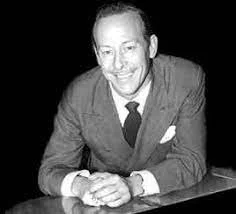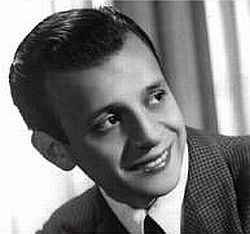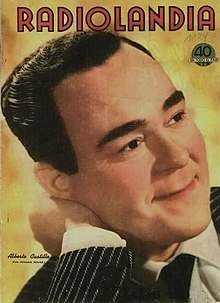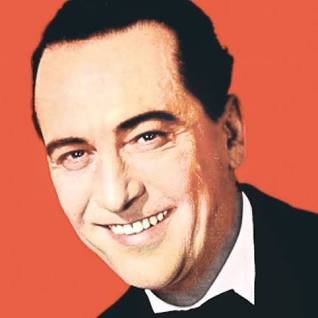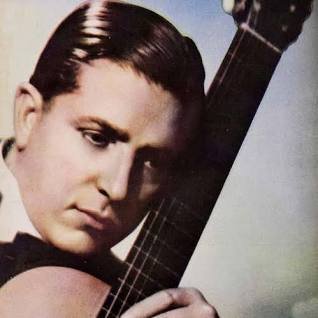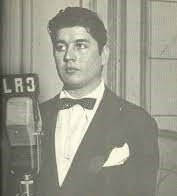Tango Song Structure: Your Guide To Dancing Tango
Learners of the Argentine tango decide to learn the dance for different reasons.
Some got into it while they were young through the influence of family and friends while others were inspired by a tango dance performance they saw at a show or on television. Regardless of how you got involved with tango,
it’s inevitable to feel confused about tango music at some point.
While some communities dance the tango to non-tango music,
many firmly believe it’s only considered tango dance if it’s danced to tango music.
But what if the tango song makes it feel impossible to move? That’s likely because you don’t understand the tango song structure. Learning about tango structure is vital as a tango dancer. That’s what we’ll be discussing in this article!
History of Tango Music
Tango music is one of the world’s most vibrant, passionate, and beautiful dance music genres.
Its origins can be traced back to the late 19th century in Buenos Aires, Argentina, and Montevideo, Uruguay, where several immigrant and rural populations mixed their musical styles.
This rich fusion of cultures gave birth to the first tango music, initially performed for the “lower classes” in the city.
Since then, tango has been passed down from generation to generation, and musicians have constantly attempted to innovate and refine it. They’ve experimented with different rhythms, melodies, and vocalizations to create a unique and complex language of music enjoyed worldwide.
As explained by MasterClass in “Guide to Tango Music: A Brief History of Argentine Tango”:
“A tango sextet is a small ensemble with a piano, double bass, two violins, and two bandoneón players (the bandonéon is a close relative of the accordion). A tango orchestra, or orquesta típica in Spanish, is a larger tango ensemble that includes additional instruments like guitars and drums, as well as vocalists and tango dancers.”
Orchestras like Carlos Di Sarli, Anibal Troilo, and Osvaldo Pugliese have shaped the modern tango music style that dancers use today.
History of Singing Tango
Initially,
lyrics in tango music were simply romanticized expressions of day-to-day life.
But in the 1920s,
a singer named Carlos Gardel helped revolutionize the genre by introducing a new lyrical and vocal style.
He popularized singing tango with “Mi Noche Triste” in 1917. His influence made it possible for tango lyrics to be even more expressive and emotional.
Other Argentine singers later followed Gardel’s footsteps and introduced different approaches to vocal delivery. Tango Allegria in “ARGENTINE SINGERS | The song in the Tango, the Tango-cancion” shared the following names as the most famous tango singers:
Carlos Gardel
Ignazio Corsini
Hugo del Carril
Enrique Campos
Alberto Castillo
Raúl Berón
Roberto Rufino
Roberto Goyeneche
In our article “FEMALE ARGENTINE TANGO SINGERS YOU MUST KNOW,” we named Azucena Maizani, Aída Elsa Ada Falcone “Ada Falcon,” and Tita Merello as some of the most influential female Argentine tango singers.
These iconic Argentine tango singers cemented the singing tango style.
They made it possible for the world to enjoy the romantic and expressive lyrics that we cherish today.
The Basic Structure of Tango Music
Now, listening to a tango song evokes many emotions. But how can a tango dancer dance to it?
Tango music’s structure actually guides your movements. However, you won’t be able to feel this structure until you know how it works and how to listen to it.
Tangology 101 in “The Structure of Argentine Tango Part 1: The Basic Structure” stated that most tangos consist of the following:
Five sections
Four phrases per section
Four measures per phrase
Four beats for each measure
Tango dance music has a time signature of 4/4 and 2/2, meaning you can count four or two beats per measure.
This structure allows you to recognize when the musical phrases begin and end, making it easier to match your movements with the music.
Tangology 101 added a note for dancers:
“This structure helps us as dancers, if we pay attention to the first verse and the first chorus, then we will know, within reason, what to expect for the rest of the song.”
It’s also best to learn about the song’s tempo or the music’s overall pace.
It can significantly affect how you interpret the music and your dancing.
Each tango song has its unique tempo, ranging from slow, smooth moves to rapid foot patterns.
Knowing the tempo can help you plan your choreography and find the right technique to match each song’s energy.
Rhythm, Melody, and Phrases
In “The Structure of Argentine Tango Part 2: Rhythm, Melody and Phrases,” Tangology 101 differentiates rhythm and melody,
defining rhythm as the basic beat of the music.
On the other hand,
the melody is the wave you’d be able to sing if you heard the music.
A tango dancer can dance to either, but great dancers can distinguish both. One will always be more dominant than the other. However, the leader decides which to dance to if both are equally strong. For example, if the music is dominated by rhythm, the leader will use it to create dynamic choreography and patterns on the dance floor.
Argentine Tango Variations
Lastly,
variations and improvisation are essential in tango.
As a dance of passion, tango is all about expressing your emotions.
Some variations may be more stylized, while others may be more improvisational. These variations go in sync with the variations in tango music.
All tango songs have the same structure, but none sound the same.
Some pieces have more rhythmic elements than melodic ones, while others have the opposite. Some are fast and energetic, while some are slow and romantic. Argentine tango singers inject their own style and interpretations into classic tango songs and make them their own.
Tangology 101 in “The Structure of Argentine Tango Part 3: Variations” used the songs “Caminito” and “Poema” to demonstrate the differences between tango variations.
Caminito
“Caminito” has an eight-second introduction before the first verse. Moreover, there are another eight seconds before each chorus.
These don’t exist in “Poema,” but both follow the verse-chorus-verse-chorus-verse structure.
Musicality: Dancing to a Tango Song
Remember:
tango music has predictively repetitive parts.
The phrases usually start with an instrumental, then a singer-led verse, and finish with the same or different instrumental variations. Knowing verse-chorus-verse-chorus-verse structure is vital for all tango dancers because the basic structure remains despite song variations. As said by Endre in “There is something you need to know about the musicality of tango”:
“Once you are familiar with the general architecture of the whole tango, it will be easier to know how much of the song is left, and whether or not the song has yet reached its intensity climax.”
Dancers can capitalize on creativity by understanding its structure to create unique choreography. “Feeling the music” or “listening to the music” is often insufficient to make you a great dancer.
“Knowing the structure” is the key to mastering the timing and musicality of your dancing!
Again, a tango song has a structure that informs your dance. It usually has three clear parts:
Part 1 – Instrumental
Part 2 – With the singer
Part 3 – Instrumental, singer or both
The part repeats more or less the previous one from the melodic structure perspective. This structure means that parts two and three become predictable if you listen to part one. That’s how you know what’s coming.
Tango music can feel complex, but you can easily interpret it if you understand its structure.
Nothing, of course, replaces listening to and knowing the song well. For example, your favorite tango song to dance to is “Caminito.”
You can easily distinguish when the instrumental introduction starts, when the verse starts, and when it’s a chorus. You can also identify the melody versus the rhythm of the music to understand better when and how to dance. Dancing to it will feel natural and effortless.
However, if “Poema” plays and you’re unfamiliar, your dancing might not flow as smoothly. But if you understand the song’s structure and predict the next part of the song, you can still feel the music and enjoy your dance.
Another factor influencing your dance is if the DJ introduces creative variations or has strong personal preferences.
In these cases, understanding the structure and predicting the next part of the song can be even more important!
The Influence of the DJ
A tango DJ at a milonga selects the tango songs for people to dance to.
They direct the milonga’s enjoyment, energy, and atmosphere. They have creative freedom when it comes to selecting tango songs.
As said by Tango Voice in “Tango DJ Fundamentals: Part 1 – Selecting Music for Dancing and Tanda Construction”:
“The music played at milongas is grouped into tandas (sets) of 4 tangos, 3 or 4 valses, and 3 milongas. The recordings selected for a tanda should be homogeneous with respect to rhythm, tempo, and emotional intensity. This is generally accomplished by grouping together songs from the same orchestra during a narrow time period, usually having the same singer. This may not be possible for tandas of milonga and vals, for which it is not uncommon to have mixed tandas comprised of music from several orchestras.”
Therefore, if the DJ is creative in their selections or has strong personal preferences, it’s even more important to be familiar with the song and its structure to enjoy your dance.
You might ask, “Does it really matter? Maybe I can just listen to the music and dance.”
You can do that, but yes, it does matter!
How you find the music strongly influences how you feel, how you connect with your leader or follower, and how you both will express yourselves through the dance.
In Tango Voice’s “Tango DJ Fundamentals: Part 2 – Managing the Overall Sequencing of Music at a Milonga,” they said:
“The role of the tango DJ is to arrange the music for dancing in sequence in such a way as to manage the physical energy of dancers on the floor, to motivate them to dance by providing music with sufficient intensity, while at the same time preventing exhaustion or boredom among the dancers. The tango DJ also is managing simultaneously the emotional energy of the dancers, which affects the nature of their connection with their partners.”
Therefore, understanding the structure of a tango song is paramount to truly enjoying your dance and connecting with your partner.
understanding the structure of a tango song is paramount to truly enjoying your dance and connecting with your partner.
Determining the factors that could affect your understanding will also help you be a better dancer. It’s not all the time that you can choose the music you want to dance to. For example, if you’re in a milonga and the DJ decides to play a tango song you don’t know well, you can’t simply leave the dancefloor and wait for your favorite song.
Your first time in a milonga can be nerve-racking. What if none of your favorite songs are played? What if the DJ plays something you don’t know? Will you still be able to dance? You can overcome that feeling by understanding the structure of tango songs and recognizing them in any context.
The DJ is there to give everyone the best experience possible; their music selection reflects that.
And as a tango dancer, your part is to enjoy your dance!
Listening to and Knowing Tango Music as a Tango Dancer
It’s unsurprising for tango dancers, especially beginners, to feel overwhelmed when they hear a tango song.
There are so many components to consider: the orchestra, the singer, the style of the music, and more. It can feel impossible to make sense of it all!
Argentine tango is known for its improvisational nature and freedom of expression, but
understanding the structure of a tango song is imperative. It’s the foundation of your dancing.
Knowing the song structure, like parts one, two, and three can help improve your sense of timing and flow when you dance. It can also help you determine what steps to take, when to embrace, how to step, and more.
Tango music actually provides everything you need to dance well. All the cues you need, the emotions, and the intensity are all there! You just have to be able to recognize them.



